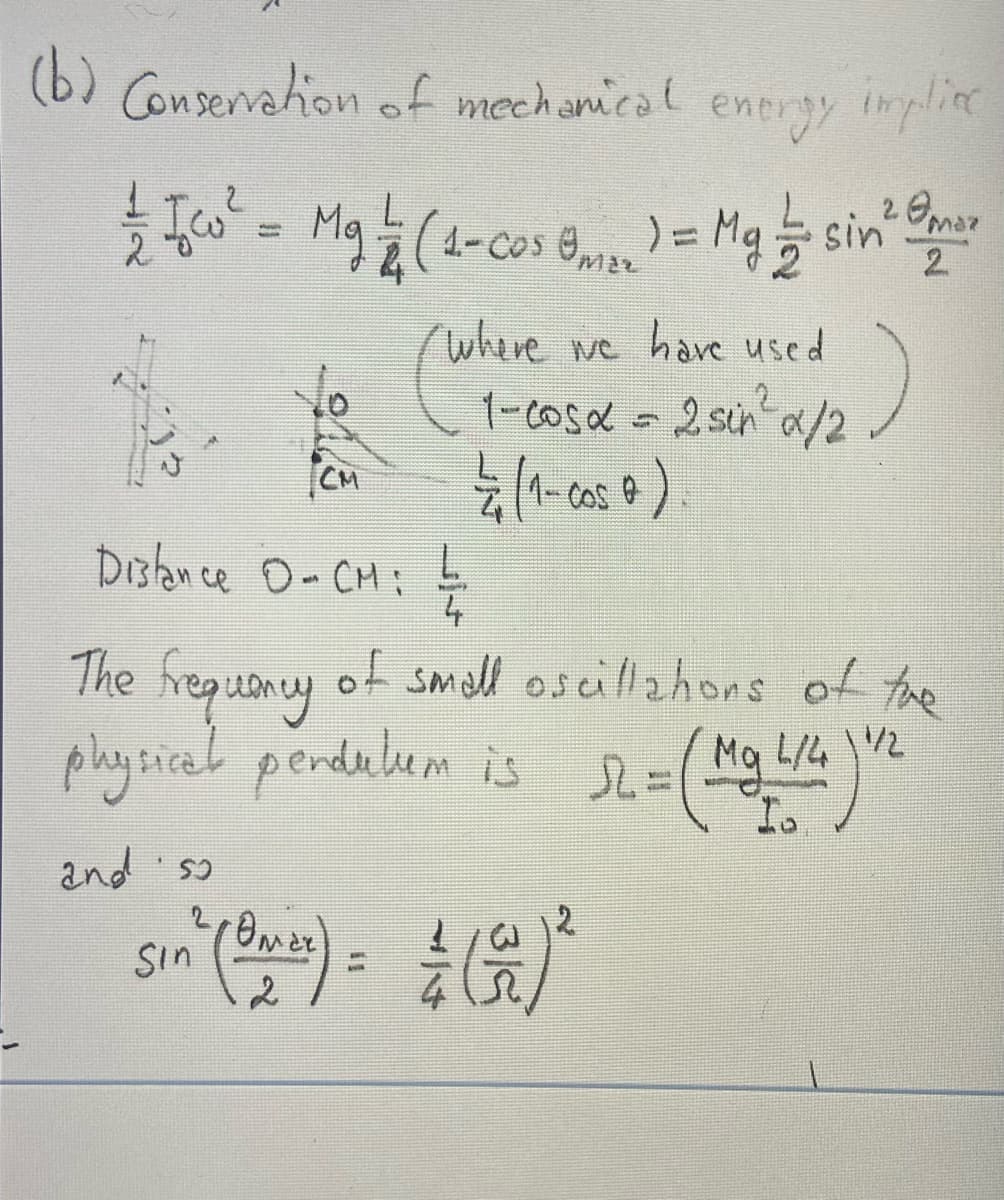Problem 3-Conservation of angular momentum and physical pendulum A system is composed of a thin uniform rod of length L= 1 m and mass M = 1 kg, and a bullet of mass mb - 7 g. Initial, the rod is in equilibrium against the force of gravity, with its axis along the vertical direction, pivoted at a distance L/4 from the rod's upper end; the bullet travels along the x-direction, with initial velocity v = 100 m/s, until it collides against the rod at a distance L/4 from the rod's lower end. After the collision, the bullet emerges from the rod with a velocity v' = 50 m/s along the x-direction, and the rod starts rotating around its pivot point. (a) Find the initial angular velocity of the rod. (b) Use conservation of energy to find the maximum angle reached by rod. (c) Find the time it takes for the rod to return to its original position, in the limit where the maximum angle reached by the rod is small (Hint: in part b, use 1 - cos a = 2 (sin a/2)² ).
Angular Momentum
The momentum of an object is given by multiplying its mass and velocity. Momentum is a property of any object that moves with mass. The only difference between angular momentum and linear momentum is that angular momentum deals with moving or spinning objects. A moving particle's linear momentum can be thought of as a measure of its linear motion. The force is proportional to the rate of change of linear momentum. Angular momentum is always directly proportional to mass. In rotational motion, the concept of angular momentum is often used. Since it is a conserved quantity—the total angular momentum of a closed system remains constant—it is a significant quantity in physics. To understand the concept of angular momentum first we need to understand a rigid body and its movement, a position vector that is used to specify the position of particles in space. A rigid body possesses motion it may be linear or rotational. Rotational motion plays important role in angular momentum.
Moment of a Force
The idea of moments is an important concept in physics. It arises from the fact that distance often plays an important part in the interaction of, or in determining the impact of forces on bodies. Moments are often described by their order [first, second, or higher order] based on the power to which the distance has to be raised to understand the phenomenon. Of particular note are the second-order moment of mass (Moment of Inertia) and moments of force.


Step by step
Solved in 6 steps with 6 images









